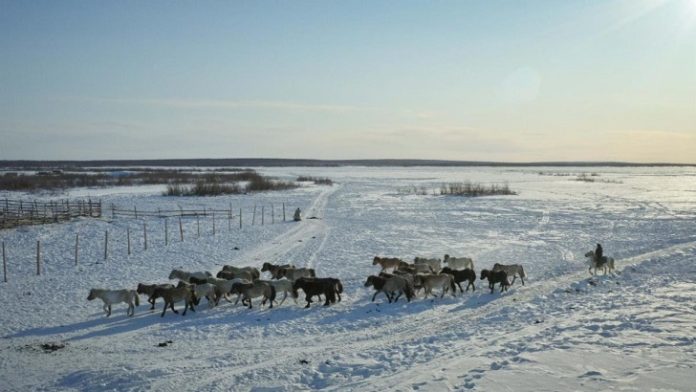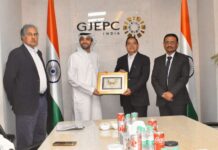September 30, 2021 – ALROSA has become the official partner of Pleistocene Park – a large-scale environmental project aimed at creating a highly productive ecosystem, which will be similar to the mammoth steppe ecosystem of the Late Pleistocene era. Dubbed the “Serengeti of the North”, the project is designed to, through experiment, confirm the theory developed by the famous Russian researcher Sergey Zimov that pastureland with diverse wildlife, such as that found in the Arctic over 15,000 years ago, prevents the thawing of permafrost and, as a result, slows down global warming.
Pleistocene Park was founded in 1996 and stretches across 14,400 hectares in the Nizhnekolymsky District of Yakutia. It is inhabited by 11 species of large herbivores from across various regions of the country: reindeer, Yakut horses, elks, steppe bison, aurochs, muskox, yaks, Kalmyk cows, sheep, goats and camels. In addition, the park is working on a joint project with Colossal Biosciences, an American company that is attempting to clone the woolly mammoth. If successful, there are plans to bright back the woolly mammoth to the natural world in Pleistocene Park.
The scientific rationale behind the Pleistocene Park project has already been set out in publications by leading international scientific journals, such as Science, Nature, and others. The results obtained over the course of 20 years suggest that the restoration of the mammoth steppe ecosystem in the permafrost zone is having a positive impact. Firstly, at high latitudes, pastureland is capable of quickly accumulating carbon in its root system, with an absorption rate 5 to 10 times greater than in areas with forest cover. Secondly, in pastureland ecosystems surface moisture evaporates efficiently, leading to a gradual reduction in marshland and consequently, in emissions of methane (CH4) – a highly aggressive greenhouse gas. Thirdly, the increased area of pastureland gives rise to the so-called albedo effect: as steppe tends to be lighter than forest and bushes, it reflects more solar radiation, thereby helping to reduce the speed of global warming.
Besides the impacts described above, the restoration of the mammoth ecosystems could also exert a strong influence on the preservation of permafrost. In winter, the animals repeatedly dig up the snow cover in search of food, thereby disrupting its insulating properties. The soil therefore freezes more intensely and thaws more slowly.
Mikhail Dubovichev, head of ALROSA’s Innovation and Technology Center:
– We are keeping a very close watch on Pleistocene Park and the research findings obtained by its creators and the working groups from leading global research centers active on the ground. If Zimovs’ theory is confirmed, humanity will have a new and efficient tool for combating global warming with good scaling potential. It is important to note that this will work in two ways: by absorbing CO2 here and now, and by preventing atmospheric emissions of the huge volumes of carbon captured in the permafrost, which, according to various estimates, exceed 1 trillion tons.
Polina Anisimova, ALROSA’s Chief Ecologist:
– The project’s overall potential extends not only to preserving the climate but also to restoring Yakutia’s biodiversity. We have previously taken part in a project to import bison from Canada, and for many years, we have sponsored the Living Diamonds of Yakutia nature park. Our involvement in the development of Pleistocene Park is yet another step together with scientists to advance the sustainable development of the region. After all, animal species are of the key elements of Earth’s ecosystems, and it is their biodiversity that underlies the biosphere’s structural and functional organization.
Nikita Zimov, Director of Pleistocene Park:
– In the course of the experiment, the impact of animals on vegetation in enclosures has been visible to the naked eye. In many areas of the park, grasses and cereals have become predominant. The carbon content in the soil is growing and the speed of the biocycle is increasing. We cannot claim that we’ve already managed to create a highly productive pastureland ecosystem, because there is still much to be done, but the positive trend is obvious. One exceptionally important stage of our project is populating the park with a large number of animals. One of the priorities for the near future is to expand the muskox population by bringing them in from other locations. We are grateful to ALROSA for its support, which will help us to do this and carry out other activities.
Disclaimer: This information has been collected through secondary research and TJM Media Pvt Ltd. is not responsible for any errors in the same.



























